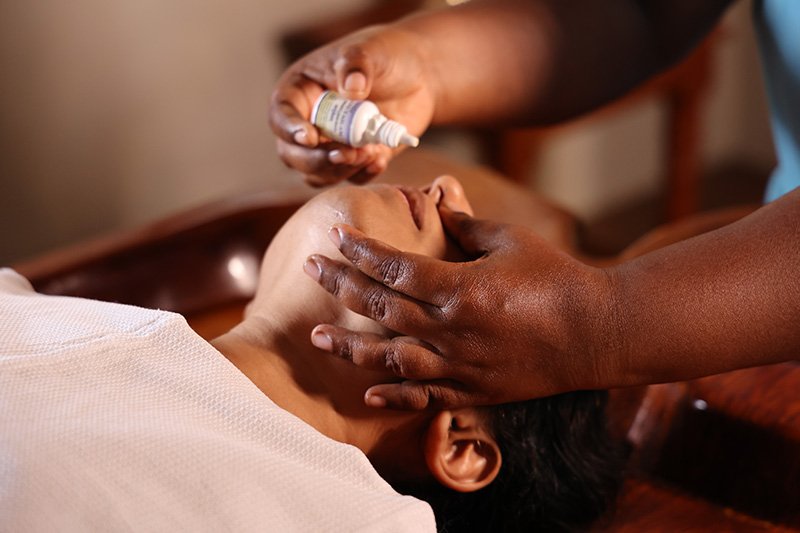
In continuation from part 1
After brushing the teeth, tongue cleaning has been explained thus in the “ashtangasangraha”.
With sunset, the metabolic and catabolic activities of the body begin to slow down, and like the setting sun, the fire in our body that aids all processing, dies down to its embers in preparation for the restful night.
As the new day begins, brushing the teeth followed by tongue cleaning rekindles the “jatharagni” – the digestive fire at the core of our body, situated almost at the navel.
Has it been your experience that if you don’t brush your teeth or clean your tongue, you feel less hunger?
Therefore, according to Ayurveda, tongue cleaning is the signal to our system to rekindle our digestive processes. Samhitas advice a tongue cleaner made of gold, silver, copper or veins of palm leaves for cleaning the tongue.
After dantadhavanam, the process next explained is “anjanavidhi” – application of collyrium to the eyes. Collyrium, traditionally referred to as ‘souviranjanam’ is a mineral which is commonly available as surma. Kohl, made by collecting soot of herbal origin, may also be used as a substitute.
Lining the eyes with collyrium or kohl ensures that vision remains clear, eyelashes that protect the eyes remain lush, and the three colours of the eye – the white of the sclera, the black of the pupil and the colour of the lens remain intact throughout one’s life. Thus, the understanding that lining the eyes was a health practice than a cosmetic one. Men and women applied collyrium to the eyes.
After anjanavidhi, processes called “nasya” and “gandhoosha” are to be practiced.
“Anu tailam tatho nasyam tatho gandhoosha dhaaranam”
– using anu taila, do nasya and gandhoosha.
Nasya is application of medicated oil into the nostrils. 1-2 drops of oil are to be warmed and put into both nostrils followed by swirling medicated oil in the mouth, which is called “gandhoosha”.
In recent times, this age old practice has gained popularity as oil-pulling. Anu taila may work out a little expensive for gandhoosha, so a practical good substitute may be cold pressed coconut oil or sesame oil.
Anjanavidhi is meant to cleanse, protect and improve vision. Nasya cleanses the sinuses and strengthens the sinus cavities and ensures better functioning of the sense organs. Gandhoosha or swirling oil in the mouth activates and strengthens the brain and the nervous system.
After these processes, one is advised to apply oil of choice to the whole body, with special attention to the head, ears and soles of the feet. Ayurveda recommends sesame oil to be the best.
Depending on our geographical location and skin condition, coconut oil and mustard oil may also be used. Oiling of the body, termed “Abhyanga” ensures youthfulness, flexibility, mobility, and better functioning of the body.
After oiling the body, we are advised to exercise the body to promote agility and strength.
Whatever the form of exercise we engage in, the acharya warns us not to exceed more than half the tolerance capacity of our body. Here, he gives a beautiful example of how the lion succumbs after killing an elephant, and explains this would be our fate if we exercise beyond half of our body’s capacity. Exercising beyond our natural capacity may also be the answer for many of the post exercise heart failures amongst exercise buffs, marathon runners and others engaged in intense sports.
The logic of exercising after lubricating the body is to ensure that the dosha called vata is not aggravated in the body.
Vyayama or exercise in Ayurveda includes yogasanas, wrestling, martial arts like kalaripayattu, archery and swimming.
Ayurveda is about balance and moderation. The daily routine prescribed in the granthas or books of Ayurveda is for the healthy human being. If one is suffering from any ailment then the routine has to worked out in consultation with an Ayurvedic Acharya.
(To be continued)
To read part 1, click here
